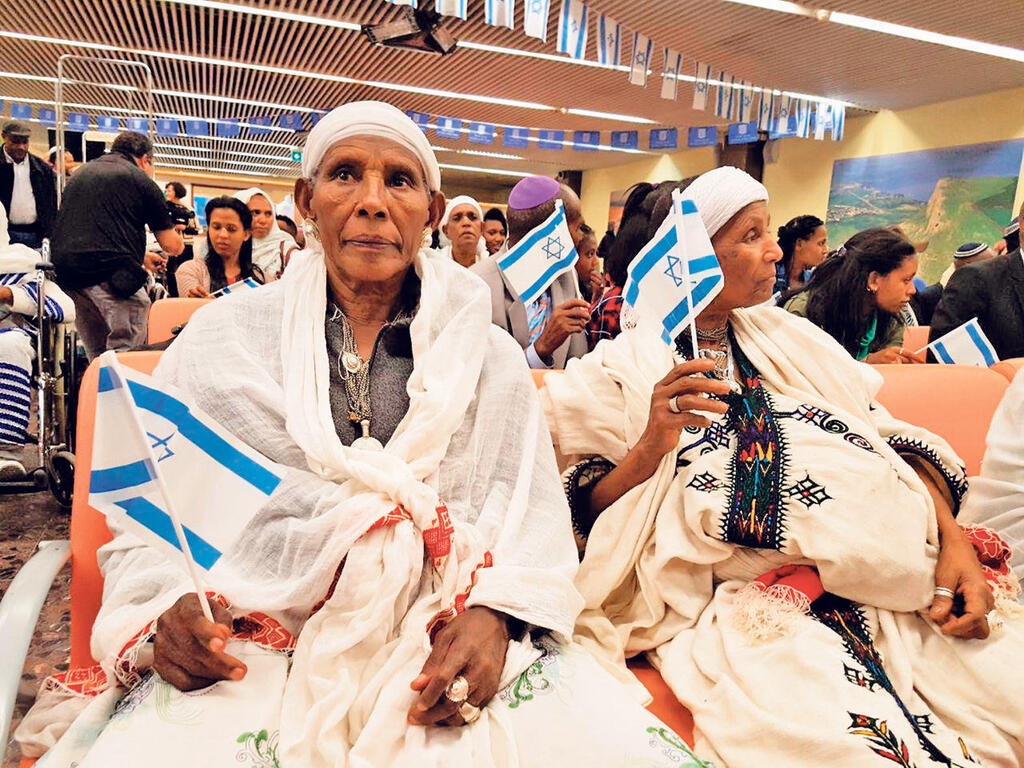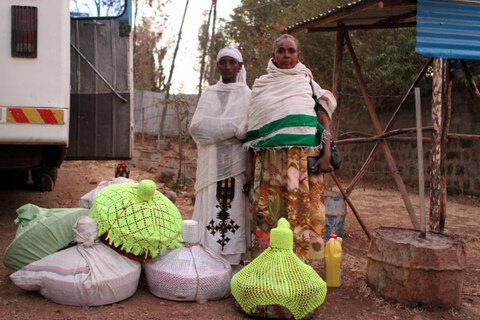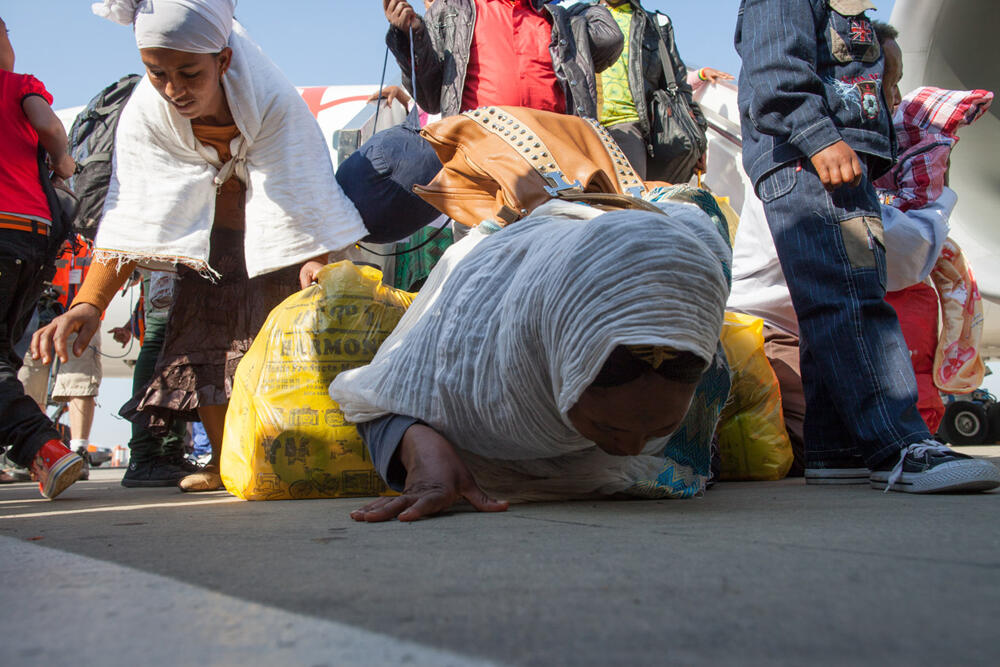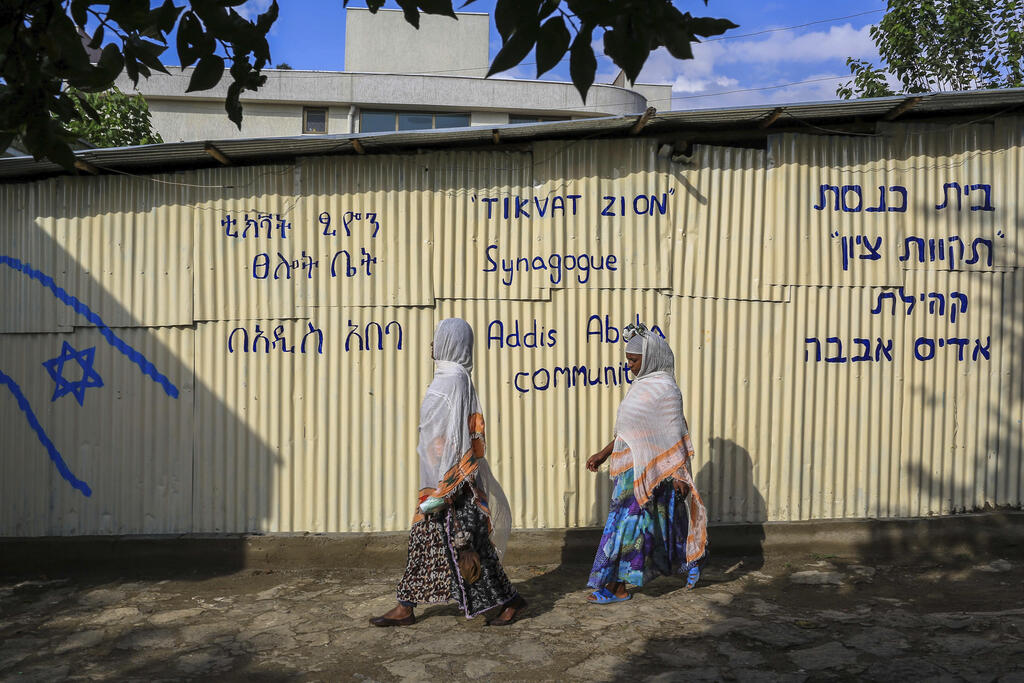In July of this year, a delegation of professionals from all government ministries will be visiting Ethiopia. On the agenda: Examining the continued Aliyah from Ethiopia to Israel.
More Stories:
Aliyah? To understand the story of the Aliyah from Ethiopia, we need to look back a few years to the decision to bring the children of Falash Mura community members to Israel.
After Operation Moses and Operation Solomon which brought members of Beta Israel to the Holy Land, it was decided to bring over the Falash Mura community. These Ethiopians claimed to be descendants of converts to Christianity who are now seeking to return to Judaism, and were concentrated in waiting camps in Addis Ababa.
In June 1997, a ministerial committee led by then-Aliyah Minister Natan Sharansky decided to shut down the Addis Ababa compound and bring all 4,000 Falash Mura members who resided in it to Israel within a year.
A year later, 3,500 people did arrive in Israel, but according to a 1998 state comptroller report, the empty compound was refilled.
In December 1999, the results of a census-like survey among the Falash Mura community were published. The survey was conducted by a non-governmental team led by David Efrati, former head of the Population Authority at the Interior Ministry. The results revealed that at that time, the community numbered 26,196 people.
7 View gallery
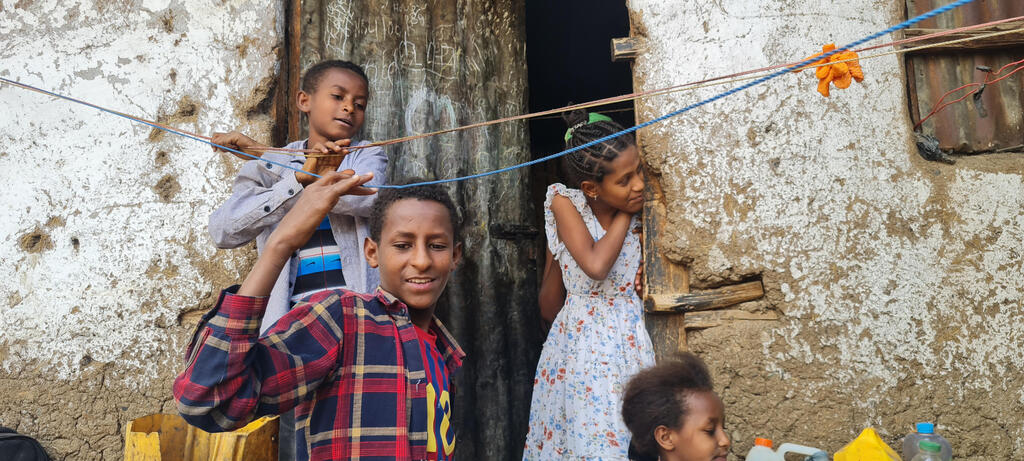

Falash Mura children help washing outside their home in Gondar, Ethiopia, May 29, 2022
(Photo: Cnaan Liphshiz)
Over the years, hundreds of Ethiopians were brought to Israel each month. In 2005, a list of potentially eligible people was presented for inspection by Aliyah activists from Ethiopia, including Rabbi Menachem Waldman - one of the foremost experts on the study of Ethiopian Jewry.
Their list included approximately 13,000 people. The Interior Ministry added about 4,000 more people to the list, based on applications that were submitted but not included in Rabbi Waldman's lists. In total, 17,188 people were inspected.
In that same year, the government made a decision that "by the end of 2007, about 13,000 people from the Falash Mura community will be brought to Israel in accordance with the final and summary list of potential migrants (hereafter – 'the survey') approved by the Interior Ministry. The survey included 17,188 people, out of which about 4,300 people had already immigrated.
It was agreed that all organizations working on the Ethiopian issue would cease their activities and commit not to resume them. By the end of 2007, after all the members of the Falash Mura community were brought to Israel according to the 'survey' as stated in section A above, the camps in Ethiopia will be closed.”
The state comptroller was required to re-examine the matter in 2008. In a scathing report, he stated that as of the year the report was published, there were still at least 2,191 people in Ethiopia who were included in the Efrati census and whose eligibility still needed to be verified.
It was possible that this number could reach 3,188 people. At that time, the camps had not yet been closed and the government needed to take action in accordance with its previous decisions on the matter.
And so, the years went by and the number of people waiting in the camps in Ethiopia continued to multiply every year, including adults (not just children). All subsequent government decisions on the matter over the years all contained variations of the same sentence.
“After the examination of their eligibility for entry into Israel and immigration of those who meet the criteria outlined in the decision, there will be no more organized immigration of groups from Ethiopia and candidates from Ethiopia seeking conversion based on their affiliation with the Falash Mura community will not be approved for entry.” However, the reality on the ground was very different.
A 2010 government decision, similar to the one from 2005, included a clear directive to close the camps in Ethiopia within three years after confirming the eligibility and Aliyah of individuals listed in the 2007 census. The updated version, dating from 2010, included a total of 7,846 people.
Time passes and the numbers of people waiting in the camps in Ethiopia continue to fluctuate. The only constant is that these camps are always full. Successive "immigration operations of Ethiopian Jews" have brought thousands to Israel, yet there always seem to be around 5,000 to 8,000 people awaiting approval to migrate. These numbers have been carefully measured to avoid public backlash.
Operation Zur Israel, which began at the end of 2020 with the intention of bringing around 5,000 people to Israel, was meant to put an end to this ongoing event and close the door on non-Jewish migration from Ethiopia in accordance with the government's decisions made in 2020.
At a Knesset Aliyah and Absorption Committee hearing from May 1, 2023, Director of the Aliyah and Absorption Unit in the Jewish Agency Shay Felber announced there are 919 people waiting to migrate to Israel by June 2023. Thank God, Zur Israel is complete.
7 View gallery


Ethiopian Jews arriving at Ben Gurion airport, outside Tel Aviv, Israel, on March 11, 2021
(Photo: Flash90)
And here, in that very month, the Aliyah and Absorption Ministry, in collaboration with the Jewish Agency, sent out an official letter calling on the chiefs of all government ministries to join a professional delegation planned to depart for Ethiopia in July 2023.
The delegation's stated goal: strengthen partnerships and professional relationships, meet with individuals awaiting immigration in Addis Ababa and Gondar, visit the synagogue, classrooms, and feeding project, tour the Jewish Agency offices, and coordinate activities with the Israeli ambassador to Ethiopia.
But wait, if all the approved migrants are expected to immigrate by the end of June, why should directors-general of all government ministries embark on a tour of Ethiopia in July?
Why then does the delegation go out to meet with migrants who should no longer be there upon their arrival? What is the purpose of this visit to the classrooms, synagogues, and feeding programs if no one will be there anymore?
To find the answers to these questions, one should refer to the statements of Rabbi Waldman and representatives of American organizations that encourage Aliyah from Ethiopia, as recorded in the protocols of the Aliyah and Absorption Committee hearing held on May 1, 2023.
According to them, there are currently about 12,000 individuals waiting in the camps in Addis Ababa and Gondar. On top of that, many more descendants of converts were found in Ethiopia’s Afar and Gojjam regions.
If you've come this far, you know that numbers mean nothing - 919 was correct yesterday, 12,000 as of today and who knows how many will be waiting tomorrow?
The story seems to repeat itself endlessly. Governments will likely keep approving thousands more migrants who do not meet the criteria of the Law of Return. Meanwhile, Aliyah organizations in Ethiopia will continue to find and encourage an increasing number of "descendants of forced converts" to migrate.
7 View gallery
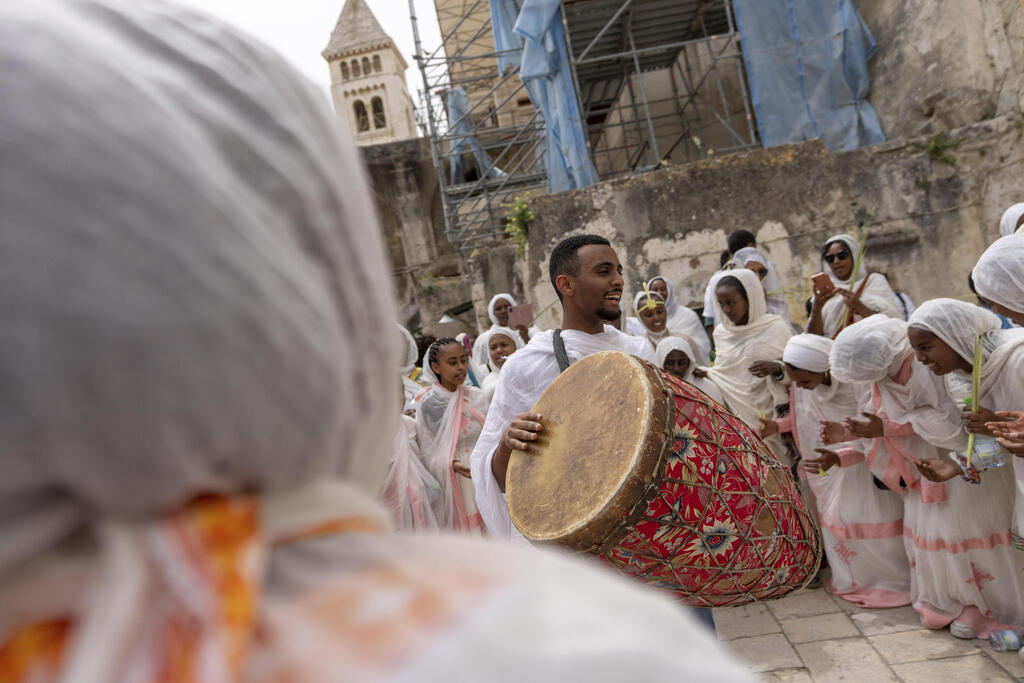

Ethiopian Orthodox Christian worshippers gather for Palm Sunday celebrations at the Ethiopian monks' quarters on the rooftop of the Church of the Holy Sepulcher, the place where Christians believe Jesus Christ was crucified, buried and resurrected, in Jerusalem, Sunday, April 9, 2023
(Photo: AP)
Undoubtedly, the Ethiopian Church in Israel is the main beneficiary of this story. Every year, this church submits twice as many work visa applications for clergy to the Population Authority, arguing that there is a shortage of faculty to accommodate the growing number of new believers who join the Ethiopian Church in Israel annually.
Remember the state comptroller's report from 2008? The report indicated that, based on various tests and assessments, roughly 3,188 people in Ethiopia were eligible to migrate in accordance with government decisions.
Meanwhile, more than 18,000 individuals have already immigrated to Israel, with less than 3% of them satisfying the criteria for Aliyah. It remains uncertain how many more non-Jewish individuals will potentially migrate from Ethiopia following the next diplomatic mission to the country.
Dr. Yona Cherki is the head of the legal department at the Israeli Immigration Policy Center


